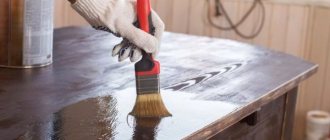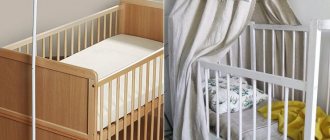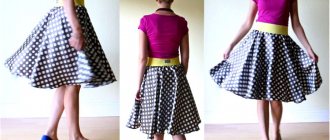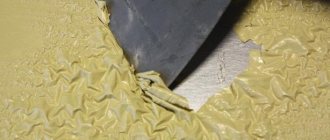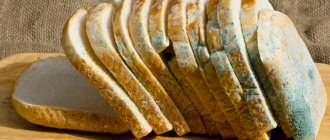Molding is a three-dimensional strip of complex or simple configuration, made from various materials.
Ceiling molding
The plank performs not only a decorative role, but also solves a number of practical problems:
- First of all, the product is used to hide the joints between wallpaper, ceiling surface and wall, door jambs, and so on;
- for masking defects, rustications, seams and other things;
- as a frame around window and door openings in order to visually enlarge them;
- It is recommended to glue moldings to the wall in cases where you need to divide a single surface into sectors and structure it;
- the product acts as skirting boards, door and arched frames;
- for decorating furniture - smooth doors and drawer fronts;
- in cases where you need to draw attention to some interesting element, it is correct to glue moldings of complex shapes.
Molding on the wall
Types of moldings
What is molding? Molding is a three-dimensional decorative element that is a strip. Molding is a rather broad concept. This includes stucco molding, baseboards, mirror and picture frames, etc.
The modern market is represented by a rich assortment of moldings for every taste and color. Depending on what room you are going to install it in and how much money you are willing to spend on decorative molding, you need to know some of the features of these elements. So, they differ in the material from which they are made and in shape.
Molding material
Polyurethane
Plastic wall moldings are the best in terms of price and quality, which is why they are especially popular. Polyurethane products have virtually no disadvantages.
Polyurethane molding
But there are plenty of advantages:
- strength and durability - will serve you for a good 30 years, especially with additional treatment with a special compound;
- convenience – they are easy to glue and take shape due to flexibility, the smooth surface will not create problems when washing the product;
- low cost;
- withstands temperature changes and dampness - indispensable in decorating bathrooms and kitchens;
- They also perfectly imitate gypsum and are available in a wide color palette.
Polyurethane wall molding is perfect if you need to create zoning, hide surface imperfections and simply decorate a room.
Polystyrene (foam)
This material is not as durable as the others, but also has a number of advantages:
- low price;
- a light weight;
- moisture resistance.
molding
Foam moldings for walls are the choice of those who want to create a “royal interior”, but are not ready to spend money. Modern synthetic material will hide unaesthetic details and decorate an empty wall.
Tree
Wooden molding is in a category higher than artificial products, and therefore costs much more. The large weight requires strengthening the strip with self-tapping screws during installation.
Wood moldings
Not suitable for rooms with high humidity. But all this is more than compensated by the attractive and aesthetic appearance of the wood. If wood moldings are treated with antiseptics and water-repellent substances, they will serve you for quite a long time.
The beautiful appearance and richness of relief forms make gypsum moldings in demand since the Renaissance. They are durable, easy to restore, do not turn yellow over time, and due to their non-flammability, are absolutely safe to use.
Plaster molding
However, they will be correspondingly expensive. And installation will cost a lot of money. In addition, significant disadvantages include the heavy weight and hygroscopicity of stucco.
Varieties of moldings in shape Decorative strips for walls also have a huge variety of shapes. The most popular include:
- cornices - designed to disguise the cornice or window frame. Usually these are simple models of unpretentious shape;
- plinths - a model with a round or semicircular cross-section. Suitable for masking joints between walls and ceilings;
- baguettes - textured strips designed for decorating paintings, panels, mirrors, shelves, etc.
- compositions are ready-made solutions from decorative elements such as an arch or rosette.
Methods for attaching moldings
Almost every molding is mounted directly on the wall, and in a place where visible traces of installation should not be allowed. If moldings are glued using glue, it must be applied carefully, avoiding excess. Depending on the material of the molding, the fastening method is selected as follows:
- For lightweight models made of polystyrene foam or polyurethane, wallpaper glue or PVA will be suitable. There are also special adhesive solutions specifically for decorative products;
- Wooden models cannot be glued with glue, so nails or screws are used. The hats will then have to be masked;
- Gypsum moldings are heavy, so they can only be fixed with polyurethane glue or gypsum mortar.
When purchasing molding, you should not immediately begin installation. It is better if the material adapts to the room within 1-2 days.
Types of moldings
To decorate the walls in the interior, you can choose moldings from a variety of materials - wood, plastic, metal, plaster. Modern industry offers a wide variety of types of these decorative finishing elements.
Wood.
This is a very beautiful style solution, because natural wood in the interior always looks respectable.
However, this finish is only suitable for natural veneer panels. It must be selected very carefully in terms of pattern and texture
so that it looks harmonious. It cannot be painted; you need to work with it very carefully so as not to damage the surface, since it will be quite difficult to correct the mistake. Wooden planks and cornices are attached using glue, screws or special nails.
Plaster.
It is usually used to decorate ceilings, joints between walls and ceilings, and corners. It is durable, but too heavy, so it will be very difficult for a non-professional to work with it. Attached to the surface using alabaster. Gypsum decor can be painted in different colors.
Made from polyurethane
. The most popular today, since its installation is accessible to almost any housewife.
Lightweight, quickly attached with glue to a whitewashed, painted surface or wallpaper. It cuts easily, but also breaks. However, you can correct the mistake without any problems by carefully plastering it.
Molding and wallpaper
Decorative strips separate wallpaper of different colors.
Moldings in the interior to separate wallpaper are used in two cases:
- Most often, they distinguish between panels made of different materials or from the same material, but of different texture or color.
Manufacturers are now producing special “companion” wallpapers. They are perfectly combined with each other in style, patterns and colors. By choosing them, you will get rid of the need to look for a suitable combination finish for you.
In a studio apartment, overhead decor is a must.
- Decorative slats are often used to separate wallpaper in studio apartments. They often need to delimit space in the bedroom, living room, kitchen, hallway.
How to glue planks to the wall?
Professional builders have different opinions on whether it is possible to glue decorative strips directly onto the wallpaper or whether this should be done before finishing the walls. Here you can choose the option that is most suitable for you:
- In the first case, you will not need to adjust the wallpaper after installing the decor.
- With the second option, when you need to redo the cladding, you will not have to remove the strips.
Acrylic glue is suitable for all materials from which decor is made.
Before gluing the molding to the wallpaper, you will need to select the appropriate composition. Plastic strips of all types can be fixed with acrylic glue. Wooden decor, if you do not want to fasten it with self-tapping screws, can be glued with “liquid nails”.
Step-by-step instructions for installing polyurethane cornices and moldings
When installing ceiling skirting boards:
1. Mark lines for connecting parts at an angle of 45° in the corners of the room.
- For accurate markings, place the ceiling cornices at the mounting location in the corner and trace the top and bottom, then measure the corner as shown in the photographs.
- Mark the cutting line by joining the top and bottom intersection points of the cornice with the line.
- Using a miter box and a hacksaw, cut the corners on the pieces that will be joined at the corner.
- Connect the elements, checking accuracy.
2. Apply mounting adhesive to the side surfaces of the stucco element in an even layer.
3. Place the product in the desired installation location and secure it temporarily from below with finishing nails.
4. Apply a generous amount of joint adhesive to the end of the molding or cornice.
5. Take the second decorative element with a cut corner and applied mounting adhesive and attach it, aligning the two products and making sure that the joint is tight and that the joining adhesive shows through.
6. The emerging assembly adhesive can be removed with a damp sponge, and the joining adhesive can be removed with a spatula as it emerges.
7. After gluing all the decorative elements and joining them, leave for 24 hours for the glue to dry. Then remove the temporary nails.
8. Cut off any excess joint adhesive with a knife and sand it with sandpaper.
9. If gaps have formed somewhere in the joints, fill them with a special sealant.
Self-tapping screws are used to increase the reliability of fastening when installing cornices for hidden lighting, decor around doorways, fireplaces, etc. In this case, the following are added to the installation steps:
1. Use 3-4 self-tapping screws per 2 m.
2. Polyurethane stucco molding can be drilled; holes are made at a distance of 20-30 cm from each other.
3. Self-tapping screws are screwed in, and their installation sites are puttied.
After removing the dried glue, the products can be painted.
Installation of cornices and moldings made of polyurethane is quite labor-intensive. Sometimes the cost of this service exceeds the price of the products themselves. Due to the nature of production, two cornices or moldings from the same batch may differ in width or height. In this case, they have to be trimmed.
Our recommendations and installation instructions with photos will help you do the installation yourself, saving a lot of money.
Are there any other questions? Ask them by phone 296-21-20.
Material of slats
Molding is made from different types of plastic, wood, metal or plaster.
Type 1. Wood
Wood has been used for centuries to make applied decor.
This is a traditional material for making moldings. Wooden decor must be treated with an antiseptic, and then it can be varnished or painted. Self-tapping screws or glue are used to secure the planks.
Advantages:
- Wood is easy to process.
- It is reliable and durable.
- The material is easy to paint and glue.
- The tree is durable with proper care.
- You can cut holes in the wooden molding for the wires.
Flaws:
- The tree is not moisture resistant.
- It's expensive.
- Wood planks have a large mass.
Type 2. Gypsum
Very often, rooms are decorated with plaster stucco.
This is another classic material for applied decor. To install such molding with your own hands, use gypsum or alabaster mortar.
Advantages of gypsum decor:
- A variety of shapes, colors, relief and patterns.
- Long service life.
Flaws:
- High price.
- Plaster decor is heavy.
- The material is fragile.
- Complex and expensive installation.
Type 3. Polyurethane
Polyurethane can be flexible, making it convenient to decorate curved surfaces with such decor.
Polyurethane strips are now the most popular. They can be rigid or flexible. Therefore, they can also be used to decorate curved surfaces.
Advantages of polyurethane molding:
- The material is smooth and lightweight.
- It is easy to varnish and paint.
- It’s easy to work with, stick to the base, including wallpaper.
- The service life of polyurethane planks is about 30 years.
- This molding is inexpensive.
- The material realistically imitates plaster stucco.
- It is easy to care for.
Type 4. Polystyrene
Polystyrene jewelry is very diverse.
Another plastic material for the production of molding is polystyrene.
Its advantages:
- The cuts on the planks are smooth and even, there are no defects or chips on them. This property is especially valuable when installing frames and frames that have complex shapes.
- The manufacturer's instructions indicate that polystyrene is easy to paint.
- This molding is easy to care for. It can be washed.
- Polystyrene weighs little and is inexpensive.
How to glue moldings on a wall with wallpaper - Club of Masters
Decorative strips distinguish between two types of wallpaper.
Greetings, my dear readers!
Molding - not a single renovation can be done without this applied decor in the form of strips. You need to know how to use it correctly. I'll tell you about this.
Molding is used in rooms to zone them or give some part of them relief or additional volume. When decorating walls, floors and ceilings, they can be separated from each other by facing materials.
Application of molding
The photo shows an applied decor, to which the concept of “molding” applies.
Molding is a broad concept that includes baguette, baseboards, stucco molding, trim, all kinds of frames, photo and painting frames. There are many types of this decor. They differ in material, size, shape, style, relief and design.
Decorative strips go well with paint. They can be mounted on a wall with wallpaper or decorative plaster.
Molding is a good way to enliven and diversify the interior of a room without unnecessary effort. By using it correctly, you will improve the aesthetic qualities of the room, giving it style and sophistication.
Purpose of decorative strips
| Image | Purpose of the molding |
| Separation of surfaces. |
This function is performed by skirting boards installed between the walls and the floor. Baguettes and fillets separate the corners of the walls.
Molding can separate two types of finishing materials, including wallpaper. Ceiling skirting boards separate the ceiling from the walls.
This task is performed by the platbands bordering doors and windows. Paintings, photographs and mirrors are decorated with frames.
Often, rectangular maps on the wall are created from molding. They draw attention to interior elements - mirrors, lamps, paintings, etc.
Decor, which serves to give volume and relief to the ceiling or walls, is installed on large areas of their surface. This molding is called a medallion or panel.
Decorative strips can be used to mask gaps and cracks in the cladding, finishing joints, technological holes, etc.
With the help of molding you can visually narrow and expand the space, as well as zone rooms.
Material of slats
Molding is made from different types of plastic, wood, metal or plaster.
Type 1. Wood
Wood has been used for centuries to make applied decor.
This is a traditional material for making moldings. Wooden decor must be treated with an antiseptic, and then it can be varnished or painted. Self-tapping screws or glue are used to secure the planks.
Advantages:
- Wood is easy to process.
- It is reliable and durable.
- The material is easy to paint and glue.
- The tree is durable with proper care.
- You can cut holes in the wooden molding for the wires.
Flaws:
- The tree is not moisture resistant.
- It's expensive.
- Wood planks have a large mass.
Type 2. Gypsum
Very often, rooms are decorated with plaster stucco.
This is another classic material for applied decor. To install such molding with your own hands, use gypsum or alabaster mortar.
Advantages of gypsum decor:
- A variety of shapes, colors, relief and patterns.
- Long service life.
Flaws:
- High price.
- Plaster decor is heavy.
- The material is fragile.
- Complex and expensive installation.
Type 3. Polyurethane
Polyurethane can be flexible, making it convenient to decorate curved surfaces with such decor.
Polyurethane strips are now the most popular. They can be rigid or flexible. Therefore, they can also be used to decorate curved surfaces.
Advantages of polyurethane molding:
- The material is smooth and lightweight.
- It is easy to varnish and paint.
- It’s easy to work with, stick to the base, including wallpaper.
- The service life of polyurethane planks is about 30 years.
- This molding is inexpensive.
- The material realistically imitates plaster stucco.
- It is easy to care for.
Type 4. Polystyrene
Polystyrene jewelry is very diverse.
Another plastic material for the production of molding is polystyrene.
Its advantages:
- The cuts on the planks are smooth and even, there are no defects or chips on them. This property is especially valuable when installing frames and frames that have complex shapes.
- The manufacturer's instructions indicate that polystyrene is easy to paint.
- This molding is easy to care for. It can be washed.
- Polystyrene weighs little and is inexpensive.
The disadvantage of the material is that it has a grainy surface.
Type 5. Foam plastic
Foam decor is the cheapest and of poor quality.
Polystyrene foam is the cheapest material for making moldings.
Its advantages:
- Ease.
- Easy to install.
- Flexibility.
- Low price.
Flaws:
- Fragility, unreliability and fragility.
- Fuzzy pattern and relief.
- Reacts poorly to many types of paintwork materials.
- The material is not resistant to solvents and some types of detergents.
Type 6. Metal
Metal strips separate tiles and laminate.
The most common metal decor is aluminum thresholds, corners for steps and tiles. Such planks are mounted in two ways: they are placed behind the finishing material and pressed against it or fixed with self-tapping screws.
Molding and wallpaper
Decorative strips separate wallpaper of different colors.
Moldings in the interior to separate wallpaper are used in two cases:
- Most often, they distinguish between panels made of different materials or from the same material, but of different texture or color.
Manufacturers are now producing special “companion” wallpapers. They are perfectly combined with each other in style, patterns and colors. By choosing them, you will get rid of the need to look for a suitable combination finish for you.
Options for decorating walls with moldings in different rooms
Depending on the purpose of the room, different variations of wall decoration with moldings can be used. More details about their possible applications in the interior of certain rooms will be discussed below.
Bedroom
In the bedroom, light colors are used to frame niches and mirrors. You can create a picture frame using molding in the middle of the room, but the picture should be soothing. Also, on light walls, darker inserts, framed by thin neutral strips, will look impressive.
If the area of the room allows, then you can zone different parts of the bedroom. For example, one part will be reserved for a work area, another for sleeping, and the third for a dressing room.
A wall framed with panels that will repeat the size of the bed will also look good.
In the bedroom, light colors are used to frame niches and mirrors.
Kitchen
In the kitchen, moldings can also separate different areas, but also unite them. Often for this room, moldings are used to decorate arches and doorways. In addition, they can be used to beautifully frame windows; wide products are used.
In the kitchen, moldings can also separate different areas, but also unite them.
Living room
In the living room, such decor can be used to differentiate surfaces painted with different colors or paints of different textures. Also on the surface they create symmetrical areas of gold, silver, white and any shades that suit the interior in which mirrors, paintings, and sconces are placed. Chandeliers on the ceiling are also often decorated with moldings.
The products can also handle the design of doorways, columns, and TVs.
The frames made of moldings in which the wallpaper is placed look great; such inserts create bright accents in the living room.
The frames made of moldings in which the wallpaper is placed look great.
Other possible options
These decorative elements are also used for hallways and corridors. The doors are framed and indicate the area where coat hooks are hung.
They decorate staircase openings, gluing them along the walls. If you make horizontal frames from them along the stairs, this will help visually adjust the length.
These decorative elements are also used for hallways and corridors.
How to make moldings for plaster walls
You will need:
- gypsum;
- silicone sealant;
- wide brush (flute);
- polyurethane molding for sample;
- bandage or plastic mesh.
Wall decoration plays an important role in creating a cozy and original interior. Using moldings, you can achieve an interesting, extraordinary effect. These can be large frames in a classic style, imitation of an artistic baguette or window opening, finishing with wallpaper of a different color or picturesque fragments. It all depends only on your imagination and capabilities.
To make plaster molding, you need to pour the plaster into a special mold.
In order to make molding with your own hands, you need to purchase one strip for a sample, and also make a casting mold from silicone sealant. Making a mold is a fairly simple task that will not take you much time. Place the finished polyurethane molding on a flat surface, lubricate it with vegetable oil, dilute a little plain soap in warm water, squeeze silicone sealant onto the sample, moisten the molding in soapy water, smooth the silicone. This is done in order to remove air bubbles and ensure a tight fit of the silicone.
After the sealant has hardened, you will have a form for casting, but this is not enough, you need to give it stability. To do this, make a long box from corrugated cardboard or plywood, pour gypsum mortar into it, and place a silicone mold with molding inside. After the plaster has hardened, the sample is removed and the mold is ready for use.
Related article: Balcony glazing with take-out: reviews and technology
In order to make moldings, it is necessary to dilute the plaster. It is important to pour the plaster into the already poured water, and not vice versa, otherwise you will not be able to achieve uniformity of the solution. You should end up with a mass that resembles the consistency of not very thick sour cream or pancake dough. Pour the solution into the mold, shake it well; if this is not done, voids may form, which is extremely undesirable. Place reinforcing material (bandage or plastic mesh) on top of the plaster, press it down a little, and leave until the material dries completely.
If, when the plaster dries, you notice an accumulation of water on the surface, it means that the solution was made incorrectly and the product will turn out brittle. The next time you mix, you will need to reduce the amount of liquid. The finished baguette is removed from the mold, and all other parts are made in the same way. You can start decorating the walls with molding.
Types of molding
Wall moldings are elements of interior decor. They are three-dimensional slats that are glued to walls, which can differ in the type of section, length, width, as well as the material from which they are made.
Planks for finishing a room can be of various shapes - convex, concave, flat, carved. Typically, the length of the planks is 2 m or more, the standard width is from 1 to 10 cm. Based on the material they are made of, they are classified:
- Wood moldings. Made from various types of wood. Preference is given to more durable species: oak, cherry, walnut, as well as pine and cedar. This is an absolutely environmentally friendly material that does not emit harmful substances into the surrounding atmosphere. Wooden elements have high aesthetic qualities - they allow you to create unique wall decor in almost any style. The disadvantages of this natural material include its rather high cost, fear of water and low humidity. When wet, wood swells, becomes deformed and can be affected by fungi. If the air is too dry, wooden finishing elements may crack.
- Polyurethane wall molding is durable and resistant to external loads. At the same time, it is quite light and can be glued with almost any adhesive composition. Decorating walls with moldings is a fairly budget-friendly decorative option due to the low cost of polyurethane. For the convenience of decorating walls with similar decor, there are especially plastic options on sale that can bend, creating curved structures - framing ceiling lamps, arches, niches and naves.
- Expanded polystyrene. It is made of polyurethane foam, colloquially referred to as polystyrene foam. The most intricate decorative elements can be cast from it, which can make the design of a room truly unique. Among the main advantages are low cost and low weight. Due to their light weight, foam moldings can be used to decorate any surface: they can be glued to wallpaper, a painted wall, whitewash, etc. The main disadvantage of expanded polystyrene is its low mechanical strength. When subjected to physical impact, pressure or an attempt to bend it, foam planks easily break.
- Metal. Metal decor is usually used to decorate areas subject to increased mechanical stress. These could be corners for steps, thresholds at the junctions of rooms, limiters for tiles or flooring materials.
- Made from mineral materials. This category includes materials made from gypsum, marble, and granite. Stone elements glued to the walls and ceilings give the interior an expensive and exclusive look. Gypsum stucco is the oldest and most proven method of decoration, used centuries ago. Among the disadvantages of such decorative elements is their increased fragility. Despite the fact that stone and gypsum are very strong in compression, they crack and split under sharp blows. In this regard, gluing should be done as carefully as possible to avoid finishing parts falling onto the floor.
Molding strips of various designs
Mineral moldings are heavy, so when gluing you need to use especially strong compounds - “liquid nails”, concentrated PVA, etc.
Zoning wall decoration
Decorating walls with moldings can change the visual dimensions of a room. Shorten the pencil case room, make the ceiling higher and widen the narrow corridor.
Vertical borders
Wall decoration with moldings located vertically is used in rooms with low ceilings. Contrasting convex lines of decoration on the walls visually raise the ceiling. Molding can hide the joints of different types of wallpaper, combining them into one ensemble, or serve as a limitation for different types of finishes.
Vertical wall decoration with white moldings makes the room more spacious and brighter. The glossy surface of the decor reflects and scatters light, blurring the boundaries between wallpaper with different patterns and colors.
Horizontal division
Horizontal relief stripes will help make a small room with a high ceiling visually proportional and cozy. Most often, they separate wooden or stone panels from the upper part of the wall, covered with wallpaper or covered with paint. The height of the panels is 70 - 80 cm from the floor. Molding in the interior is chosen with a pattern that is in harmony with the lower part, but of a different shade. It is desirable that it be wider than 5 cm, with a complex pattern.
For a very high ceiling, you can add another level of finishing. Use flat contrast molding to separate the 2 colors. Place the same finish right under the ceiling. Then all finishing elements will be in harmony.
Highlighting accents and zones
For classic and historical styles, it is important to choose the right moldings and use them to create decorative designs and accents in the wall decoration. A medium-width convex strip is most suitable. Classic color white. It highlights areas covered with patterned wallpaper with figured frames, divides the walls into numerous zones, and emphasizes paintings, drawings, and stucco moldings.
On plain surfaces, a narrow molding in a contrasting color will add elegance to the walls and emphasize the sophistication of the style.
Changing the proportions of door and window openings
In rooms with small windows, you can visually enlarge the openings. It is enough to stick moldings on the walls at the end of the slopes. If the frame design provides slats, then paint them in one color, preferably white. Then the windows will look more massive and larger.




